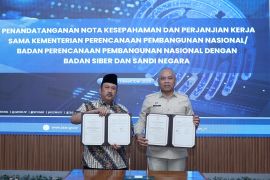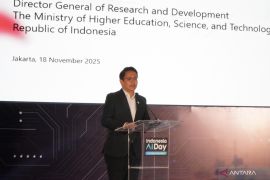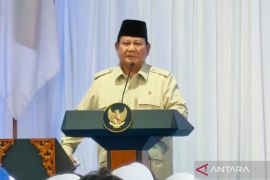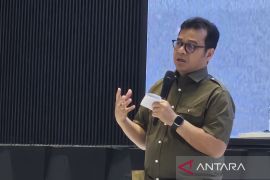We want to ensure that people can receive benefit from the digital society and can contribute to the digital economyJakarta (ANTARA) - The Ministry of Communication and Informatics (Kominfo) is continuing efforts to build digital infrastructure as part of an effort to bring benefits from digital transformation to the community.
"We want to ensure that people can receive benefit from the digital society and can contribute to the digital economy," the director of information empowerment at the Directorate General of Informatics Applications of Kominfo, Bonifasius Wahyu Pudjianto said during a T20 virtual event entitled ‘Unleashing Global Urban and Rural Digitalization Potential,’ on Tuesday.
Through the development of digital infrastructure, the Indonesian government wants to ensure that all citizens have access to affordable Internet, he added.
Currently, Kominfo is installing 4G base transceiver station (BTS) towers at thousands of locations in Indonesia, including adding 1,209 towers to the existing 4G network.
Based on ministry data, out of a total of 83,218 villages and sub-districts in Indonesia, 12,548 villages are still not reached by the 4G network. Of the locations that do not have 4G network, 9,113 villages and sub-districts lie in the outermost, remote, and underdeveloped (3T) areas, which are still included in Kominfo's working areas.
Meanwhile, the remaining 3,435 villages and sub-districts are served by cellular operators since they are located in commercial areas.
In addition to the 4G BTS towers, the government built the Palapa Ring national fiber optic backbone network, spanning 348,442 kilometers, in 2019.
Related news: Digital transformation encourages women's equality in business: gov't
Indonesia’s topography has presented a challenge to ensuring equal Internet access, Pudjianto noted. Therefore, Kominfo has also built a multifunction satellite, SATRIA-1, with a capacity of 150Gbps, which is scheduled to enter orbit in 2023.
The government is also planning to build two more satellites: SATRIA-2, with a capacity of 300Gbps, and SATRIA-3, with a capacity of 500Gbps. The two satellites are expected to become operational in 2024 and 2030, respectively.
In addition to the 4G network, Indonesia has also rolled out 5G services since last year on a limited basis at a number of points. The government is assisting in the deployment of 5G services for Super-Priority Tourism Destinations.
Related news: Library transformation crucial for economic development
The Indonesian government is also building National Data Centers at four locations, which are targeted to be completed by 2025.
Pudjianto said that digital transformation is not only a matter of setting up adequate telecommunications infrastructure, but also building the community’s ability to utilize the technology.
To that end, the government is conducting digital literacy programs at various levels, including through the National Cyber-Creative Digital Literacy Movement program, Digital Talent Scholarship, and Digital Leadership Academy.
The development of infrastructure and the community’s digital skills is being carried out to address the digital gap that still exists in Indonesia.
Related news: Digital management innovation key to global digital transformation
Related news: Y20 Pre-Summit in Lombok discusses youth digital fnancial awareness
Translator: Natisha Andarningtyas, Resinta
Editor: Fardah Assegaf
Copyright © ANTARA 2022












